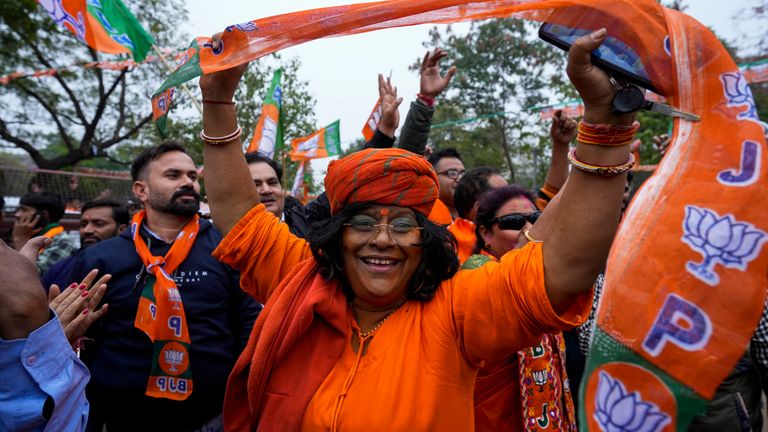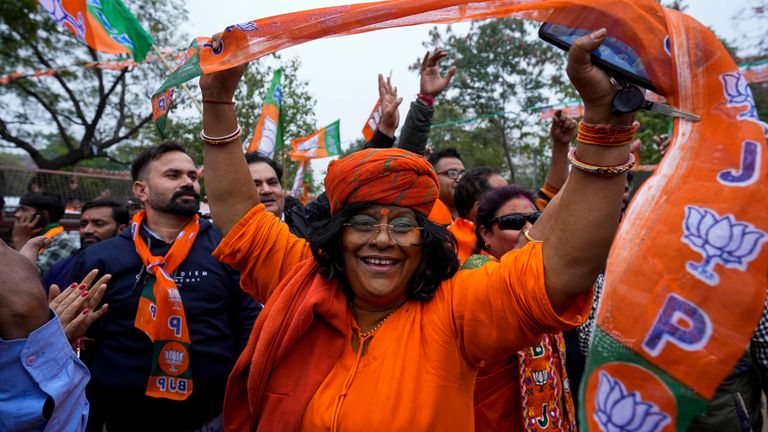Indian Prime Minister Narendra Modi and the Bharatiya Janata Party (BJP) have swept the recently held state elections in Madhya Pradesh, Rajasthan and Chhattisgarh.
Of the four big states that went to the polls, the party wrested Rajasthan and Chhattisgarh from the Congress party while retaining Madhya Pradesh with an overwhelming majority.
The Congress party under the leadership of the Gandhis won the southern state of Telangana – a consolation as the party has no major state government in the north except for Himachal Pradesh.
These elections are significant as they are perceived as a precursor to the general election early next year.
Barring the south and eastern part of the country, the BJP are now the dominant power across India – ruling 12 of the 28 states.
Mr Modi has been the face of the party throughout the campaigns – traversing the country championing development.
His appeal to the Hindu majority has also been a key attraction for voters.
But it has been the promise of well-targeted welfare schemes – with a more efficient delivery system to the last person in the chain – that has appealed to all.
And in particular, women voters, who form the large electoral catchment who are ardent supporters of Mr Modi.
Conventionally, people vote differently in state elections for regional-specific concerns while federal elections are fought over national issues.
But Mr Modi has turned that custom on its head.
Even in the presence or absence of state leaders, he\’s the main campaigner with his face on posters, advertising hoardings and handouts.
The tagline this time being a “Modi guarantee” and a “double engine” governance at the state and federal level.




